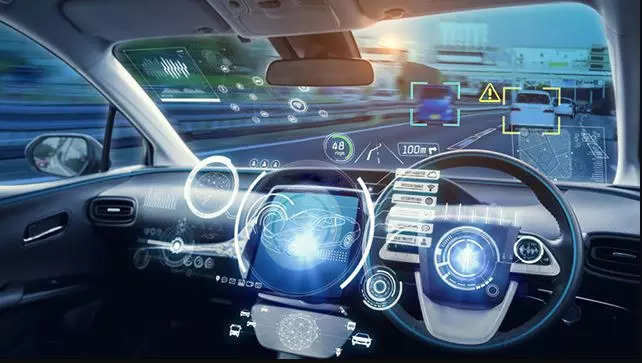
On this National Technology Day 2023, the efforts of all the scientists, engineers and innovators who are dedicatedly engaged across sectors for making the lives of mankind better, stand remembered and praised. We live in an age of technology when breakthroughs and Innovations across sectors are at their peak. Name any industry and there are a host of fast-paced disruptions all around. Be it Transport, Infra, Telecom, Energy, Financial and banking etc.Having spent over three decades in the Automotive Industry, I believe that Technology is at the core of the sector.
Design and development efforts, manufacturing setup, supply chain processes along with downstream activities like marketing and sales are all dependent on a new generation of technologies and digitalization. With its relentless efforts, the Indian automotive sector has been touching the pinnacle of advancement in areas like materials technology, clean energy, powertrain, emissions, safety, connectivity, electrification etc. for fostering sustainable mobility solutions and Sustainable Development Goals of 2030.
Over the past few years the Auto sector is going through a new phase of ecological sustainability consciousness, with committed efforts being made to protect the same. Through contribution and supplementing the efforts of the Government in prevention of pollution, biodiversity conservation and climate change, the industry has stepped up its efforts in multiple directions. It is here that treating sustainability in its holistic form is prudent and it makes immense sense to encompass the economic, social and environment angles, by the industry.
Five broad axes
For the automotive ecosystem, the industry can formulate holistic strategies along five broad axes, or the “5 Zeros” concept which are necessary for moving towards a greener and a brighter future.
These 5 Zeros are:
1) Zero Environmental Impact: Through control of emissions and use of new energy paradigms;
2) Zero Waste: Through approach of circularity and reduction of wastage of space and time;
3) Zero Stress: Through Driver Assistance systems and enhanced Human Machine Interface;
4) Zero Left Out: Through effective design language, ergonomics comfort and convenience meeting diversity; and
5) Zero Fatalities: Through democratization of road safety for vehicle owners and road users alike.
While there has been a good realization and actions in most of these areas, the strategies and their execution for ensuring safety for the road users’ need specific attention. Continuing on the trends from the past many years, India has topped the global charts of fatalities caused by road crashes due to a record 4 lakh plus road accidents reported country wide claiming over 1.5 lakh lives and injuries close to the number of accidents. India has one of the largest road networks globally and the rapid rate of penetration of automobiles along with economic growth cannot sustain at the cost of safety of users, vehicles and the goods being transported.
The primary causes of road accidents in India are a result of over speeding, human error, stress, poor vehicle upkeep and constrained infrastructure.
Road safety
Maintaining a safe road user experience is a triangulation of Initiatives of the government through policy and creation of infrastructure, superior technologies and features that are developed and offered by the auto OEMs and disciplined driving habits on the part of vehicle and road users.
Our country has a well-established regulatory framework administered by the Ministry of Road Transport and Highways. During the past many years, the government has embarked on a wide-ranging program to institute standardized safety features for a variety of motor vehicles. Crash safety requirements, such as full frontal, offset frontal and lateral impact, have been mandated. A pedestrian protection compliance program had been instituted for all new and existing models. Passenger vehicles have been mandatorily equipped with additional safety features, such as driver airbag, co-driver airbags, safety belt reminders for driver and co-driver, reverse parking alert system, speed alert system and manual override for central locking systems to name a few.
On the commercial vehicle front, fitment of vehicle location tracking systems and emergency buttons have been mandated for national permit vehicles, state-wise vehicle tracking platform for safety and enforcement in accordance with AIS 140 standard for connectivity solutions, truck and Bus body codes that cover various requirements, reverse parking alert system for all buses and trucks, occupant compartment fire safety and alarms etc. have been mandated. Many revised standards have been enforced for various component and system-level requirements, such as fuel tanks, mirrors, light signalling devices, steering gears and effort, retro reflective devices, tyres and safety glazing. With the penetration of vehicle electrification, the functional safety aspects and testing parameters of electric powertrains have been provisioned too.
Going beyond the regulations many Indian OEMs have been proactively driving the agenda of safety. Tata Motors has been leading the safety agenda with the launch of India’s safest car, Tata Nexon, complying with GNCAP 5 stars followed by other models like Altroz and Punch. Way back in the 90s Tata Motors established the country’s first facility for passenger vehicles, when no regulation related to the crash norms existed. The company also recently launched the country’s first Heavy Commercial Truck with Advanced Driver Assistance functions like Collision Mitigation System, Lane Departure Warning System, Tyre Pressure monitoring system, Driver Monitoring System etc. Similar features have been implemented in the PV space too.
Modern day customers prioritise the cause of safety over factors like speed and mileage before making a purchase decision and driving this change of perception by auto OEMs has not happened overnight. It has taken a long-standing vision, drawing out strategic plans, making timely investments into competencies/capabilities, years of talent development and nurturing, finding the sweet spot on digital methods/practices, incubating innovative concepts, choosing the right technology partners and delivering solutions for mass markets through engineering.
Vehicle safety
From a product development perspective, in order to achieve the target performance requirements of vehicle safety, the safety development process starts from the vehicle styling phase itself.
A world-class infrastructure which consists of seamless road infrastructure, traffic regulation systems, parking management and signs, is being developed with a lot of emphasis and resources being deployed by the government. Efforts towards education and consequence management (in case of traffic violations) are garnering traction as well.
Therefore, for India to transform its outlook on the world map and be recognized as a “safe for all” nation, the three elements of safety would need to continue to propagate together like a wave front. The realization of these efforts may take time but will surely fructify.
(Rajendra Petkar is President and CTO, Tata Motors. Views are personal.)















